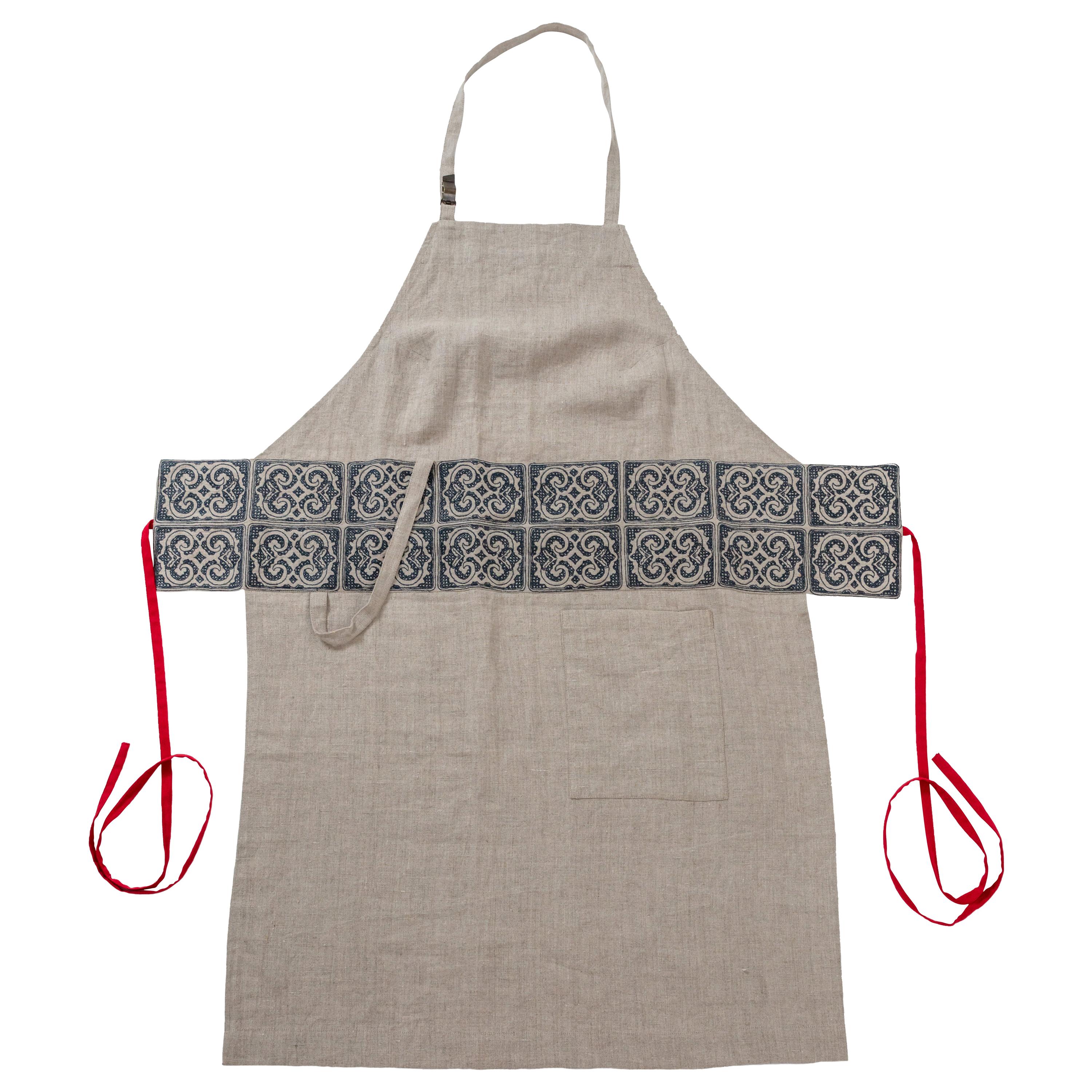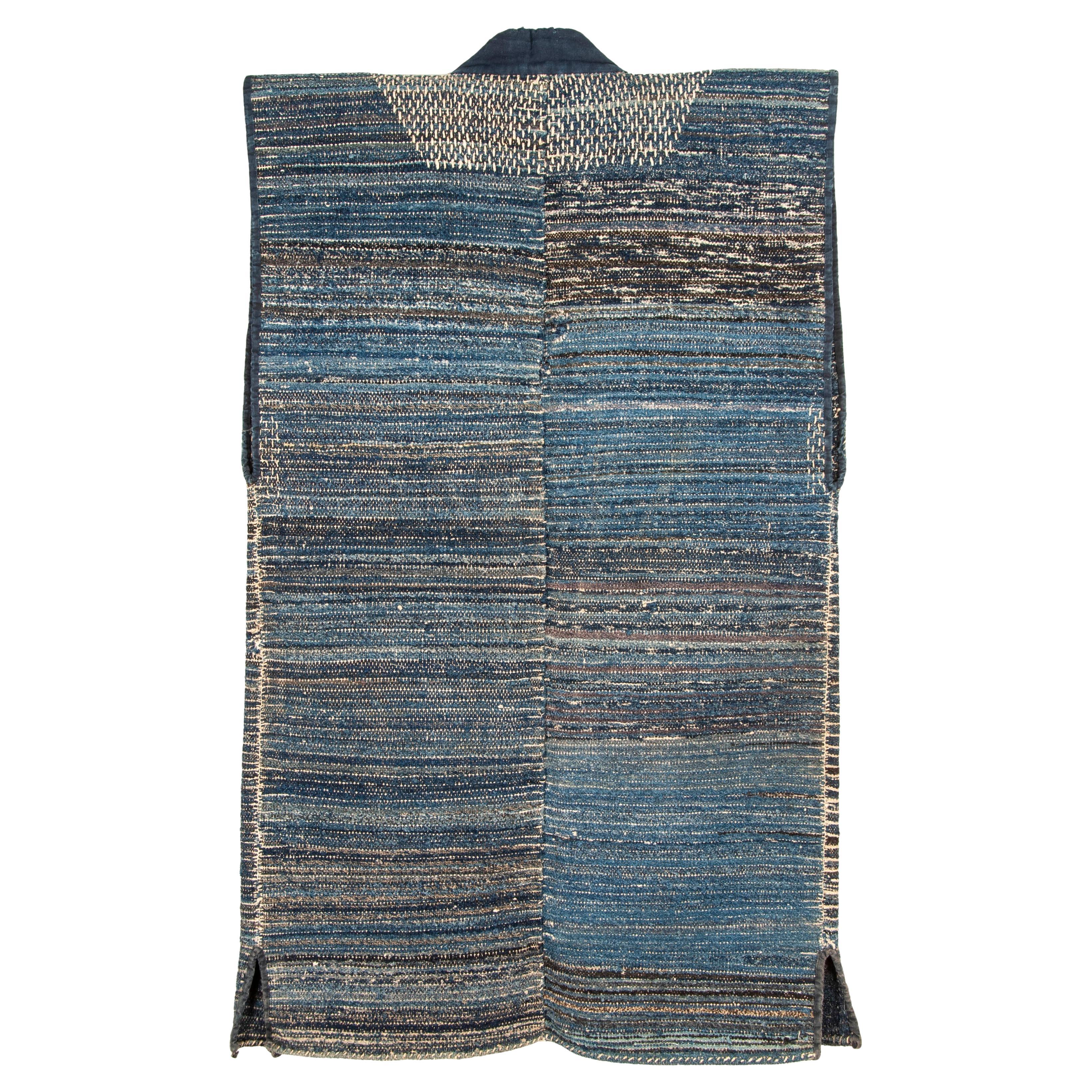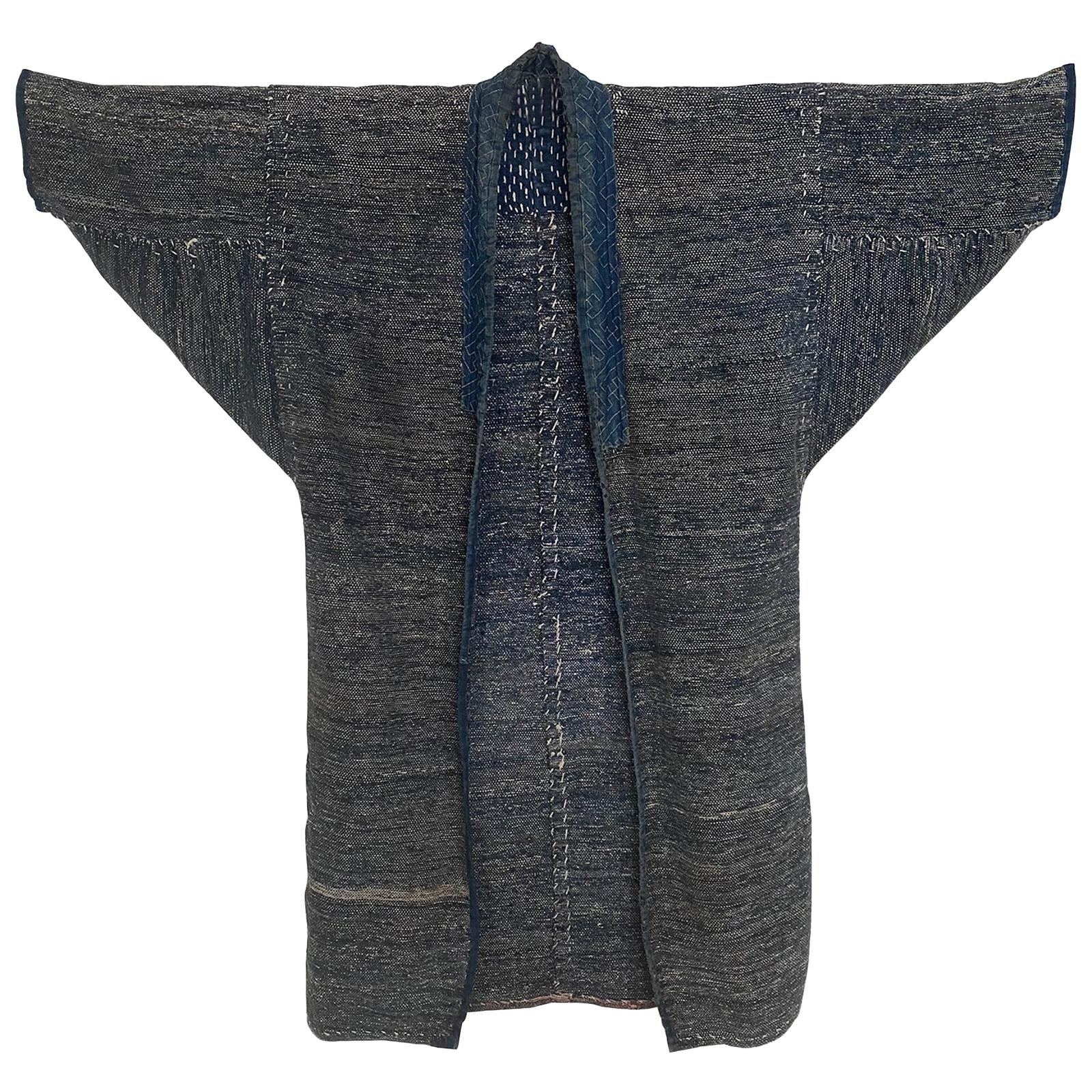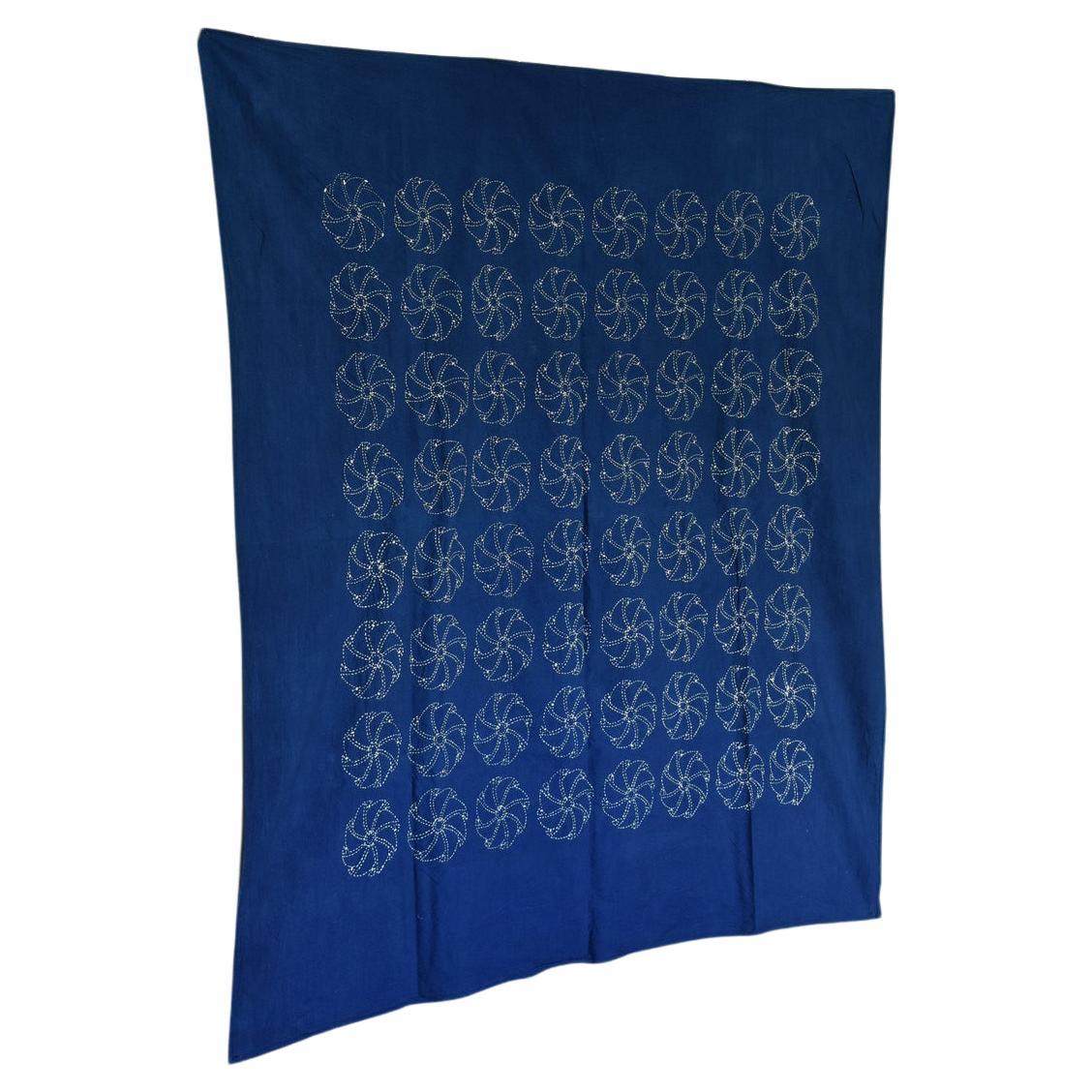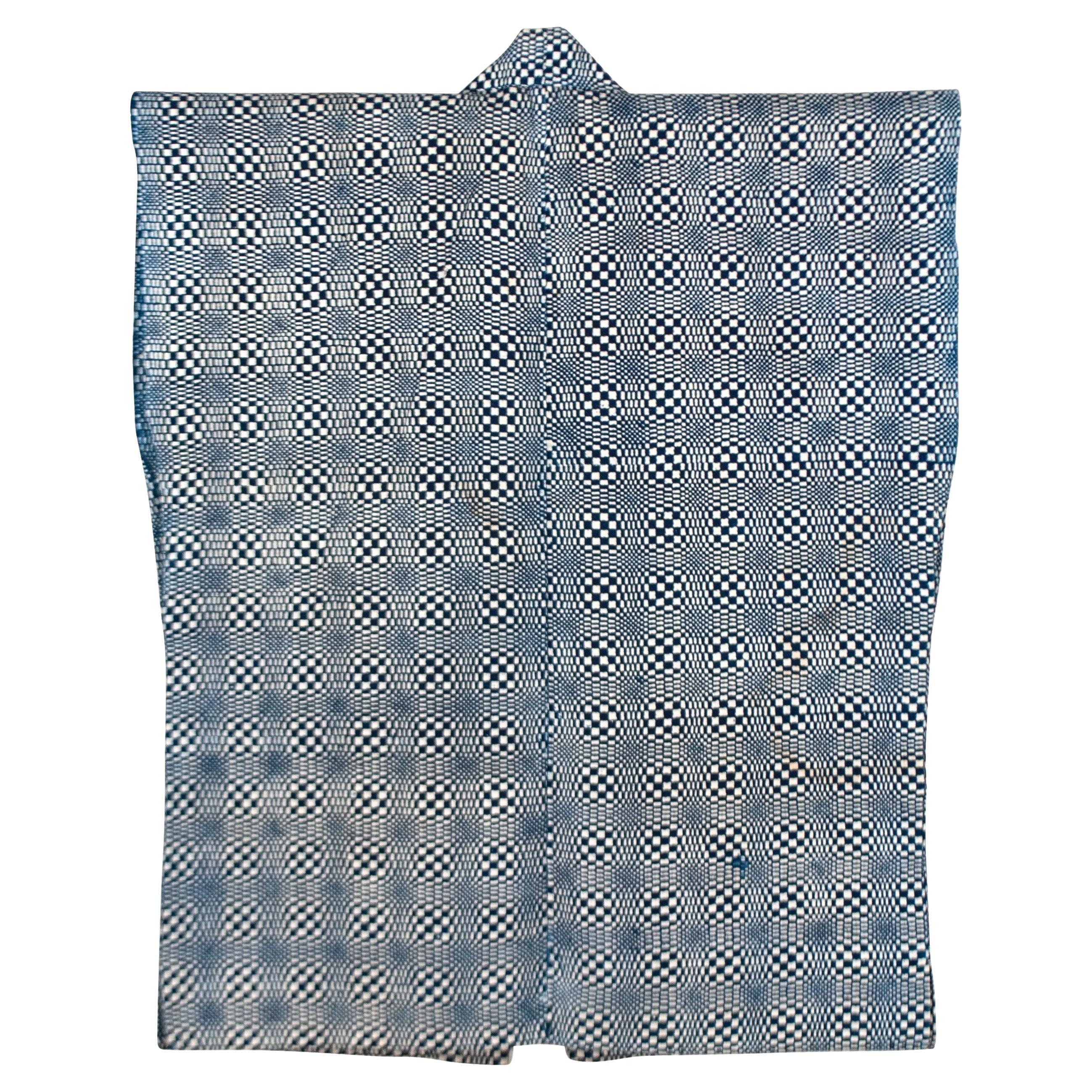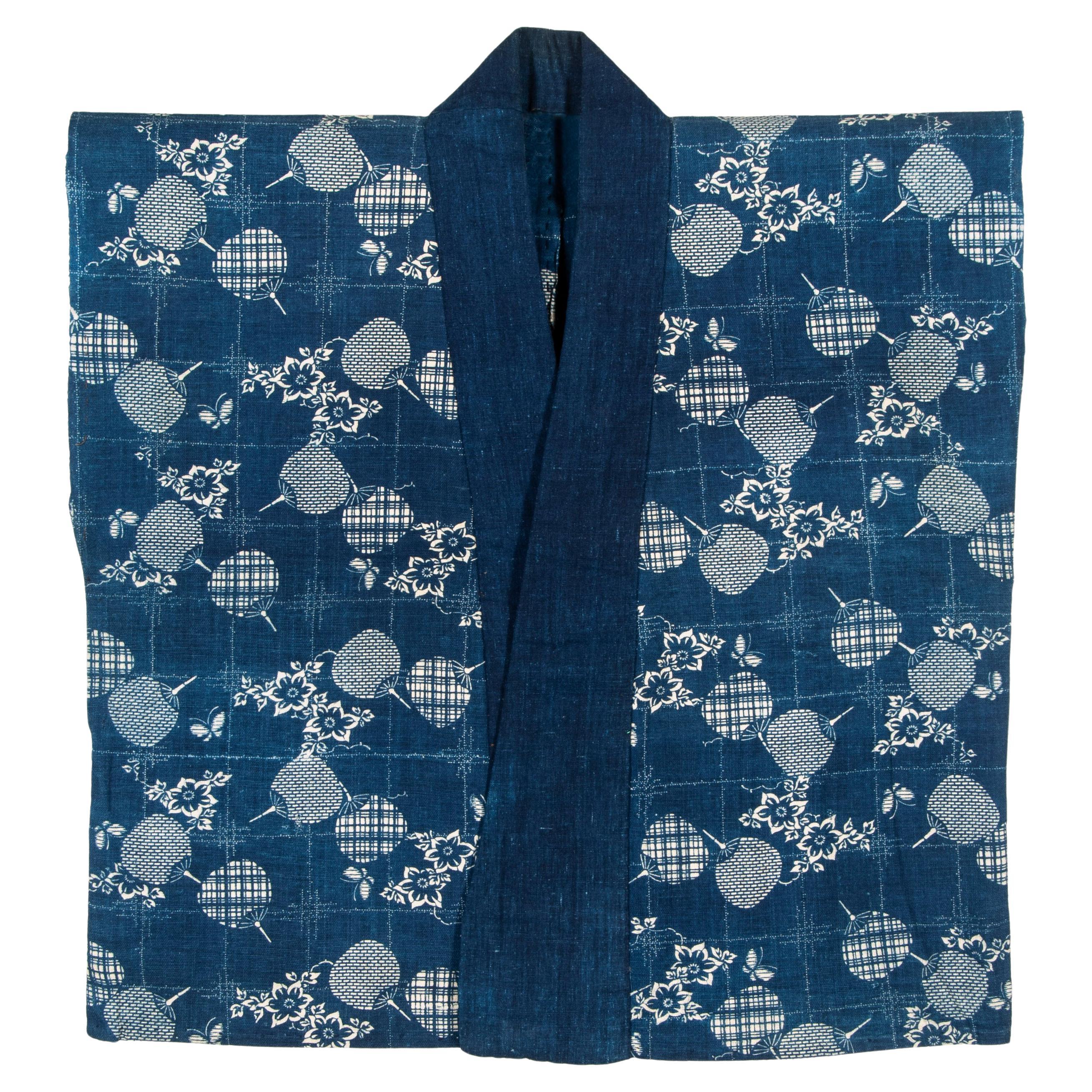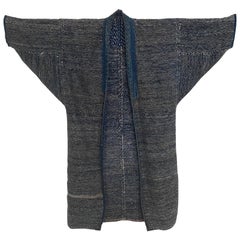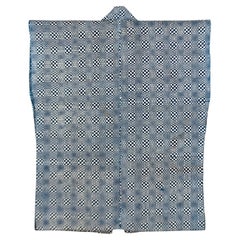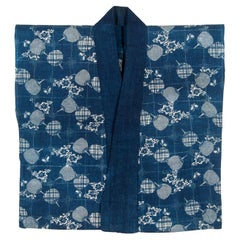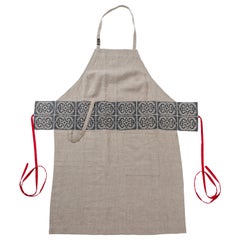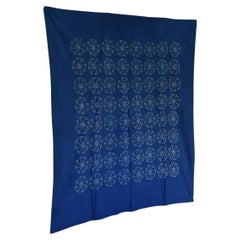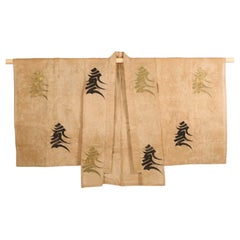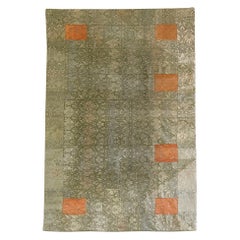Items Similar to Antique Japanese Embroidered Apron (Mae-Kake)
Want more images or videos?
Request additional images or videos from the seller
1 of 10
Antique Japanese Embroidered Apron (Mae-Kake)
$1,200
£923.12
€1,071.48
CA$1,692.29
A$1,895.65
CHF 995.66
MX$23,050.44
NOK 12,608.33
SEK 11,968.69
DKK 7,996.87
About the Item
Antique Japanese Embroidered Apron (Mae-Kake)
This beautiful dark indigo cotton apron has tight sashiko embroidered stitching on both sides, on one side the hemp-leaf (asa no ha) pattern and on the other a geometric step pattern. The intricacy of the stitching and the precision of the design layout is an indication of the embroidery skills of the woman who made this apron. A fine piece of folk art from rural Japan. In very good condition.
Width: 16 inches, Height: 27.5 inches
Early 1900s.
- Dimensions:Height: 27.5 in (69.85 cm)Width: 16 in (40.64 cm)Depth: 0.5 in (1.27 cm)
- Style:Taisho (Of the Period)
- Materials and Techniques:
- Place of Origin:
- Period:
- Date of Manufacture:1900-1920
- Condition:Wear consistent with age and use.
- Seller Location:Point Richmond, CA
- Reference Number:Seller: JR#11-081stDibs: LU1778245115852
About the Seller
5.0
Platinum Seller
Premium sellers with a 4.7+ rating and 24-hour response times
Established in 1999
1stDibs seller since 2015
687 sales on 1stDibs
Typical response time: 2 hours
- ShippingRetrieving quote...Shipping from: Santa Fe, NM
- Return Policy
Authenticity Guarantee
In the unlikely event there’s an issue with an item’s authenticity, contact us within 1 year for a full refund. DetailsMoney-Back Guarantee
If your item is not as described, is damaged in transit, or does not arrive, contact us within 7 days for a full refund. Details24-Hour Cancellation
You have a 24-hour grace period in which to reconsider your purchase, with no questions asked.Vetted Professional Sellers
Our world-class sellers must adhere to strict standards for service and quality, maintaining the integrity of our listings.Price-Match Guarantee
If you find that a seller listed the same item for a lower price elsewhere, we’ll match it.Trusted Global Delivery
Our best-in-class carrier network provides specialized shipping options worldwide, including custom delivery.More From This Seller
View AllAntique Japanese Recycled Saki-Ori Farmer’s Vest
Located in Point Richmond, CA
Antique Japanese Recycled Saki-Ori Farmer’s Vest
This late 19th C recycled farmer’s vest from northern Japan was strip woven from repurposed cotton scraps in a technique known as sa...
Category
Antique Late 19th Century Japanese Meiji Tribal Art
Materials
Cotton
Saki-Ori Farmers Coat, Northern Japan, Meiji Period
Located in Point Richmond, CA
Saki-ori farmers coat, Northern Japan, Meiji period
A very heavy and substantial saki-ori coat, made of cotton with an indigo kasuri lapel. Several patches of hand sewn stitching ...
Category
20th Century Japanese Meiji Textiles
Materials
Cotton
Antique Japanese Stencil-Dyed Han-Juban
Located in Point Richmond, CA
Antique Japanese Stencil-Dyed Han-Juban
Han-juban are worn under kimono. This example, without its original cotton sleeves, displays a unique stencil-dyed pattern with indigo. A ve...
Category
Early 20th Century Japanese Taisho Tribal Art
Materials
Cotton
Antique Japanese Stencil-Dyed Han-Juban With Fan Motif
Located in Point Richmond, CA
Antique Japanese Stencil-Dyed Han-Juban With Fan Motif
Han-juban are short, waist length garments that are worn under kimono. It’s not uncommon for older examples to be missing thei...
Category
Early 20th Century Japanese Taisho Tribal Art
Materials
Cotton
Early 20th Century Wool Apron 'Pangden, ' Western Tibet
Located in Point Richmond, CA
Early 20th century wool apron (pangden), Western Tibet
In original condition, four panels woven on a back-strap loom, stitched together and worn as an apron among the Tibetans of th...
Category
Early 20th Century Tibetan Tribal Textiles
Materials
Wool
Vintage Miao Baby Carrier Panel With Cross-Stitch Geometric Pattern, South China
Located in Point Richmond, CA
Vintage Miao Baby Carrier Panel With Cross-Stitch Geometric Pattern, South China
An exquisitely embroidered Miao baby carrier panel from Xifeng County, Guizhou Province, south China...
Category
Early 20th Century Chinese Tribal Tribal Art
Materials
Cotton
You May Also Like
Hand embroidered linen apron from the SoShiro Ainu collection
By SoShiro
Located in London, GB
This hand-embroidered linen apron from SoShiro’s Ainu collection, a collaboration between award-winning artist Toru Kaizawa and Shiro Muchiri, took design cues from leading chefs, resulting in the addition of clever loops and pockets.
The apron, partly inspired by the structure of a kimono, is made of absorbent linen, with a 400-gram-per-square-meter thread count. The Blakiston’s fish owl eyes motif was designed by celebrated Ainu artist Mamoru Kaizawa. It is hand embroidered using 100% silk, and its placement is reminiscent of a kimono obi...
Category
2010s Japanese International Style Textiles
Materials
Linen, Natural Fiber
Japanese Indigo Dyed Old Embroidery Cloth / Japanese Toy Pattern / 1912-1960
Located in Sammu-shi, Chiba
It is a Japanese indigo dyed antique cloth.
It calls its name "fu-ro-shi-ki".
Originally used in the dressing room of the public bath "furo" during the...
Category
Early 20th Century Japanese Showa Textiles
Materials
Cotton
Antique Japanese Noh Outer Cloak Chōken with Stencil Decoration
Located in Atlanta, GA
A large and striking Japanese outer cloak for Noh performance (known as Choken) circa 19th century (late Edo to early Meiji period). The robe was woven from a natural bast-fiber (kno...
Category
Antique 19th Century Japanese Edo Textiles
Materials
Natural Fiber
Antique Japanese Brocade Monk's Robe Kesa Meiji Period
Located in Atlanta, GA
A Japanese Kesa (Monk's Vestment) made from thirteen columns of patchworks of shimmering woven brocades. The elaborate motifs feature repetitive elaborat...
Category
Antique Late 19th Century Japanese Meiji Textiles
Materials
Brocade, Silk
Japanese Monastery Robe Patchwork Kesa with inscription Edo Period
Located in Atlanta, GA
A Japanese Kesa (Monk's Vestment) made from fourteen columns of patchworks of blue brocades with sumptuous woven pattern. The elaborate motifs feature re...
Category
Antique Early 19th Century Japanese Japonisme Textiles
Materials
Brocade, Silk
Japanese Woven Linen Kimono with Katazome Stencil Dyes
Located in Atlanta, GA
On offer is a Japanese summer kimono woven from indigo blue linen with ivory color fine stripes patterns with apparently darker weft additions. The elega...
Category
Early 20th Century Japanese Japonisme Textiles
Materials
Linen
